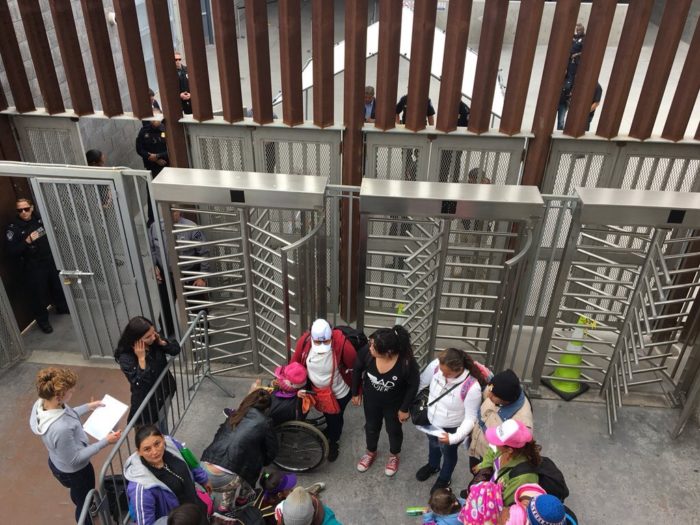The Refugee Caravan: Human Rights First’s Observations from the Border

In April 2018 approximately 240 Central Americans who had traveled together in a month-long caravan through Mexico sought asylum at the U.S. port of entry in Tijuana, Mexico. While the caravan this year garnered unprecedented attention following a Fox News report and subsequent tweets from the president, there is a longstanding tradition of migrant and refugee caravans in Mexico. The organizing network, Pueblo Sin Fronteras, has supported caravans every year since 2008 to raise awareness of the plight of refugees from Central America and provide safety and security to vulnerable refugees fleeing for their lives.
The world is currently facing the largest refugee crisis since World War II. Globally, there are 22.5 million refugees and 65.6 million forcibly displaced individuals. On April 29, 2018, attention focused on 240 of these individuals, members of a caravan seeking asylum in the United States.
U.S. law and treaties protect people’s legal right to seek protection from persecution in the United States. Yet, in contravention of U.S. law and treaty obligations, President Trump tweeted that he had “instructed” the Secretary of Homeland Security “not to let” people who had traveled as part of the caravan into the United States. Administration officials threatened criminal prosecutions, detention, and family separation for those seeking asylum, and misrepresented caravan organizers and volunteer lawyers as people trying to cheat the system. Both the president and administration officials mischaracterized these asylum seekers, at least in part, in an attempt to pressure Congress into passing legislative changes that would block refugees from exercising their legal right to seek asylum in the United States.
In response to these publicized threats, Human Rights First sent two researchers to the border to gather information and observe as members of the caravan requested asylum protection at the U.S. port of entry. While the administration portrayed caravan asylum seekers as a “stampede” of the border, Human Rights First’s researchers witnessed a very different story. The group presented themselves peacefully at the official U.S. port of entry and waited for days for Customs and Border Patrol (CBP) to allow them to enter the port. The agency ultimately processed about 240 caravan asylum seekers over the course of six days. CBP then sent asylum seekers to Immigrations and Customs Enforcement (ICE) detention facilities. In at least one case, CBP and ICE separated children from a parent.
